Have you ever wondered why people use more drugs during the holidays than any other time of the year? Well, as it turns out, holidays can be a mixed bag of emotions. Although people look forward to the season, it is not uncommon for loneliness, grief, financial strain, family conflict, and seasonal affective disorder (SAD) to creep in. Many overindulge during the holidays, not just because of the countless opportunities for using substances, but rather the need for extra comfort because of heightened stress.
The fact is that holidays aren’t holidays for those who find themselves burdened with other additional obligations and tasks while their everyday lives must go on as usual. So they tend to be more vulnerable and so inclined to succumb to drug use because stress sources multiply. This, at least, may be one reason why people use more drugs during holidays. But there are more reasons, as you will notice in this article.
A holiday season isn’t entirely to blame for drug use issues, but it contributes, of course. It’s the time of year when people are more inclined to participate in different social events where drugs and alcohol are the glue that holds everything together.

Again, many people base expectations about holidays on unrealistic displays of healthy, affluent families from TV ads and shows. But this only fuels anxiety during the holiday season. When someone tries to live up to what they see on TV, yet it is not realistic, they may become anxious and try to numb their feelings with drugs.
Seasonal pressures arise from various sources, including financial obligations, increased demands on time and energy, and even final exam and grade reports. There’s usually a ton of extra demands. People want to do it right, so they end up becoming exhausted.
Seasonal affective disorder or winter depression is also pretty common around this time of year. SAD is a type of depression linked to low-light conditions that occur during long, dark winter months.
Here are the reasons why people use more drugs during the holidays:
Holidays evoke images of family bliss: loved ones gathering around a fireplace, lots of music and dancing, gift exchanges and catching up, etc. But for many, this dreamy image is usually nothing more than that – a dream.
For some people, a holiday is a time of loneliness because they live far from family or have lost their loved ones. For this group, holidays can be a time of sad memories and additional stress because it reminds them of relationships they don’t have. Some may turn to drugs and alcohol to blow off some steam or disconnect with the world.
The same applies to people who dread holidays because of family drama and strained relationships. The thought of a perfect holiday gathering can make a normal social tension unbearable.
Lack of finances is a common reason for seasonal sadness. One survey by the American Addiction Centers revealed that finances and gift-giving were the leading cause of holiday stress. An average person spends about $750 on gifts. And this figure can go even higher for those with more children, friends, co-workers and so on.
While gifting may not seem like a problem, it can be a major depressor among those who are strained financially. The effects of this stress can be detrimental on many levels and may lead to an increase in drug use during the holiday seasons. Studies show a strong connection between substance abuse and depression. For some, this stress becomes too much to bear and many with deep mental health issues can succumb to suicide.
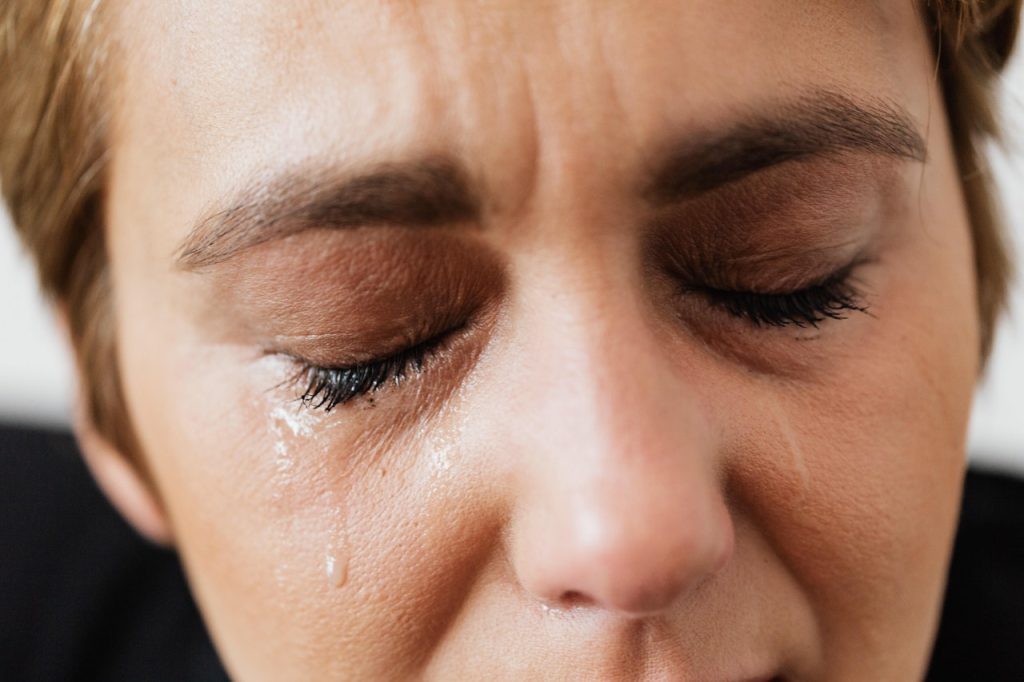
Large gatherings, tense family relationships, and all the preparations can be overwhelming to some people. This is because of the constant worry that something might go wrong or that people will judge. Social anxiety is also pretty common around holidays, considering many events involving groups of peers, friends, and families. People with anxiety issues turn to drugs to help lessen the anxiety – though this only worsens the situation.
A study by the American Psychological Association and Greenberg Research tried to find out those who suffered from elevated stress levels during holidays, and the findings were surprising. Of the respondents in the study:
A sad, anxious, stressed, or angry person might lose sleep and be unable to focus on the celebrations and events happening around them. And as it turns out, these mental disorders often travel in the company or drug abuse. Drugs may help one feel less inhibited and more comfortable in social settings. But anxiety robs one the ability to know when enough is enough, or that drugs in any amount can be dangerous, or that they need therapy and treatment and not drugs for their disorder.
Impulsivity, a personality trait, is a risk factor for substance misuse. Those who are struggling with addiction assign higher values to immediate values than the delayed ones. And with lots of events, parties, and the general craze going on, the impulsivity only tends to heighten during holidays.
Nostalgia, a sentimental yearning or longing for the past, is a big part of the holiday season. Like birthdays and anniversaries, holidays trigger nostalgia because they act as temporary landmarks. Nostalgic depression is a holiday syndrome and may be accompanied by feelings of bitterness, helplessness, anxiety, and depression. It is common among loners with a history of family disruption.
Nostalgia is beneficial as it helps people cope with boredom, grief, and loneliness. It also strengthens social connectedness and reinforces a sense of identity. But to some extent, nostalgia can be toxic. Toxic nostalgia is especially harmful to recovering addicts, as it can make them believe that the time they spend using drugs is worth returning to. It may also make them forget all about the negative impacts and stresses of addiction that made them quit in the first place.

It doesn’t come as a surprise that people indulge in seasonal binge-drinking during the holiday season. In fact, the Distilled Spirits Council of the US says that a quarter of the $49 billion-a-year profits in the distilled spirits industry come from late November through to New Year. So whether it’s peer pressure or excitement or the desire to unwind, people – including the moderate drug or alcohol users – tend to increase their consumption rates. Moderation is rarely taken seriously during holidays – with many believing that they’ll compensate for all their bad consumption in January. So, they keep overindulging in drugs, alcohol, and even food.
When all these things come together, one is likely to experience symptoms like:
Unfortunately, these symptoms can have far-reaching effects, especially for those with no support systems. In addition to using drugs, the symptoms can increase the risk of suicide, personal injury, violence, and relapse. That is why it’s essential for those who experience such symptoms to get professional help. It also helps to have friends to talk to whenever sad memories or feelings of loneliness come up.
We all feel anxious from time to time – like when we have an upcoming speech, or when going to a job interview, and so on. Anxiety is a normal part of life. It is your body's way of dealing with stressful situations and can keep you alert or help you perform better. To that end, anxiety is a good thing. However, there are times when the anxiety gets out of hand and starts being a problem. Like when it interferes with daily activities. Problem anxiety tends to be chronic and irrational and may result in or reflect an anxiety disorder. Anxiety and alcohol are a dangerous combination, resulting in a vicious cycle that never ends.
There are about 40 million people with an anxiety disorder in America at any given time. Of this number, 1 in 5 reports using alcohol to cope with stress.
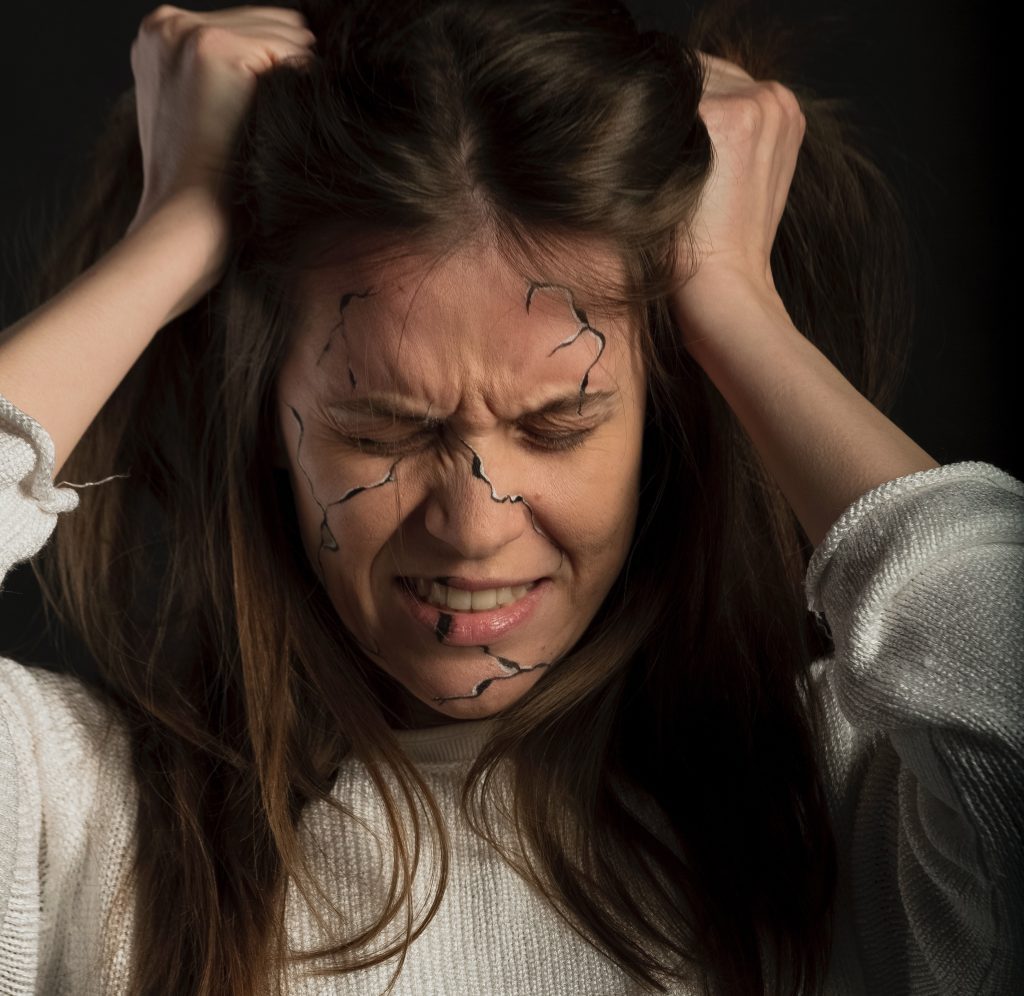
Panic disorder: this anxiety disorder is characterized by the fear of having future attacks and losing control in public. Patients with panic attacks turn to alcohol to calm down or numb their fear of an impending attack. Research shows that alcoholism occurs on 10-40% of those with panic disorders and that 10-20% of panic disorder patients are struggling with addiction.
Post-traumatic stress disorder: Any psychological or physical trauma (like an accident or sexual abuse) that leaves one feeling out of control or powerless can cause PTSD. Many people with PTSD turn to alcohol to numb their pain or gain some control in their lives.
Social anxiety disorder: according to the National Institute on Alcohol Abuse and Alcoholism, about 20% of people who struggle with social anxiety also struggle with alcohol use disorder. This is partly because they drink to try to relieve the stress that comes with social situations.
Specific phobia: those with specific phobias experience intense fear of a situation or thing that poses no immediate threat. Some common examples of phobias are small spaces, heights, and animals.
Generalized anxiety disorder (GAD): is a common anxiety disorder affecting 3.1% or 6.8 million adults in the United States. It's characterized by excessive and persistent worry about several different things - whether its work, family, health, money, etc. – even when there's little or nothing to provoke it.
GAD makes an individual always nervous, tense, and worried about everything. Of course, this is no way to live, so some individuals turn to alcohol to cope with the condition. This article will delve deeper into GAD and how it affects those with alcoholism.
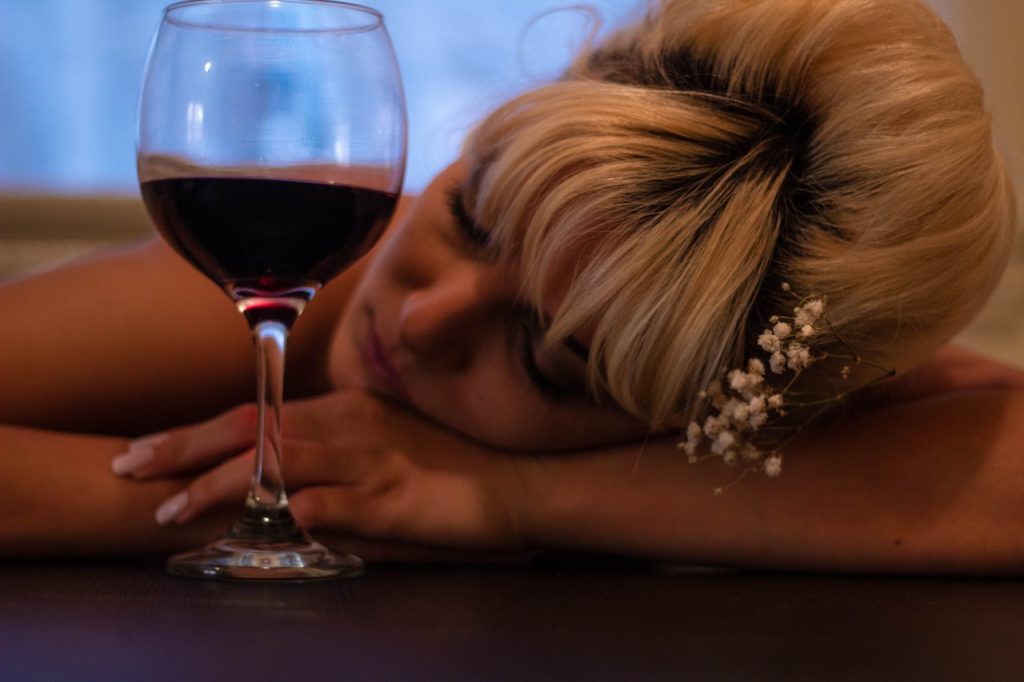
Anxiety disorder affects the central nervous system. It can increase blood flow, accelerate the heart rate, and push the brain into overdrive. Doctors often prescribe CNS depressants like benzodiazepines to treat extreme cases of anxiety. Benzodiazepines reduce GAD's intensity of physiological symptoms, like panic attacks, headaches, muscle tension, restlessness, and insomnia – but so does alcohol (to some extent).
Alcohol is a sedative and depressant. In this way, it has some effects that mirror anti-anxiety medications like benzodiazepines. That's why patients who cannot access a prescription for their anxiety problem often turn to alcohol to relieve their symptoms. Alcohol use is also common among those who can't afford therapy or are too embarrassed to seek it. They drink up to increase their levels of relaxation and also mitigate stress in their lives.
But the use of alcohol to lower anxiety almost always fails. Anxiety is a mental disorder that can arise from long-term drinking. Substance-induced anxiety can happen in people with other anxiety disorders like GAD. Unfortunately, adding another anxiety only makes the GAD worsen.
Besides, those who depend on alcohol to mask their anxiety problems may start to rely on it to relax and may build a tolerance to the de-stressing effects of alcohol. This makes stress and anxiety even more difficult to cope with.
People struggling with anxiety may turn to alcohol to relieve stress. But long-term heavy drinking is also a risk factor for anxiety disorder. This is because alcohol upsets hormones, sleep, and brain function. When the mind and body don't get enough rest, one may feel irritable and on edge. The changes in the brain may also increase the risk for anxiety issues. This is because the brain chemicals – neurotransmitters and serotonin – are responsible for positive mental health.

And as it turns out, alcohol doesn't just cause anxiety – it can worsen it. A 2017 study indicated higher anxiety levels among individuals with alcohol use disorder than those without when faced with stress. In one review of 63 studies, reducing alcohol intake led to improvements in both anxiety and depression. According to the authors, cutting back on alcohol could enhance one's self-confidence, social functioning, and mental and physical quality of life.
Still on anxiety, there's also the aspect of concern and uneasiness that comes after drinking alcohol. Many heavy drinkers end up panicking as they try to review the things they might have said or done, and what others who were present are thinking of them.
Studies show a different trend of alcohol use among individuals with a generalized anxiety disorder. Most people with this mental health disorder start drinking excessively around the same time as the onset of anxiety symptoms. And while it still isn't clear why this happens, researchers think that the initial signs are related to alcohol withdrawal. It is also possible that alcohol use presents a mechanism for anxiety and panic disorders to develop.
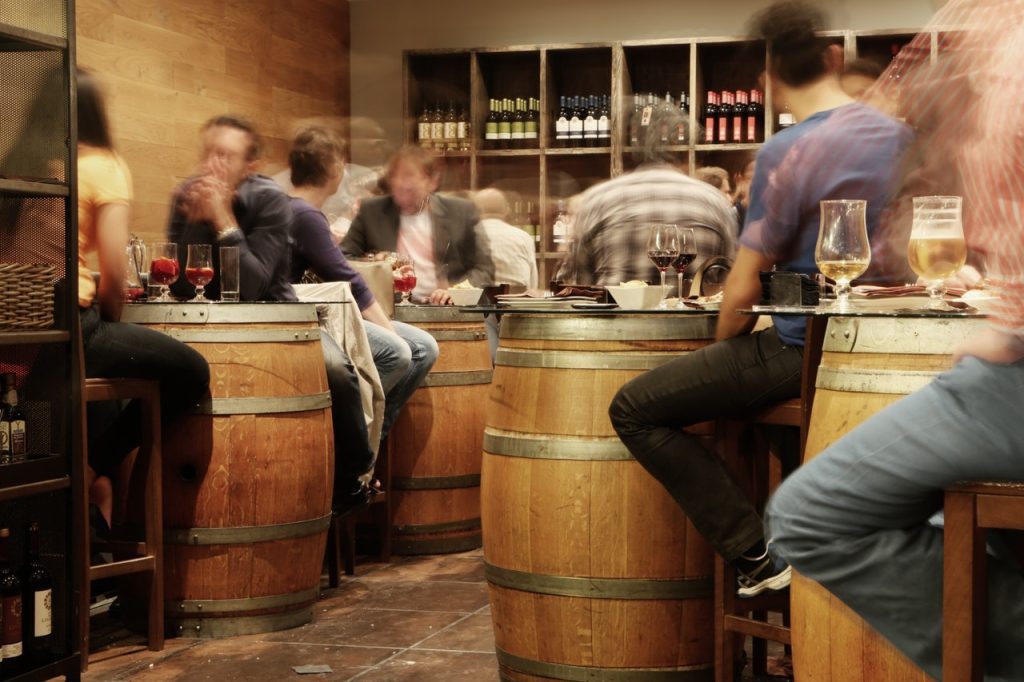
Not only does drinking lead to anxiety and anxiety lead to drinking, the two trigger each other into an unending cycle. Anxiety makes an individual start drinking. This only makes the anxiety worse. So they drink more to feel better but end up with even worse anxiety and so on.
The more alcohol one takes, the more tolerant they become. Over time, they may need to drink more alcohol to achieve the same effects. In the long run, this may negatively affect their mental health, leading to higher levels of depression and anxiety after drinking.
Patients are highly discouraged from trying to treat anxiety or detox from alcohol without help from a healthcare professional. The process needs professional oversight to help manage their conditions. There are many effective treatments for alcohol and anxiety disorders, including talk therapy, individual/group therapy, prescribed medications, or a blend of these methods. Patients should also join support groups for continued support throughout their recovery.
Like many people, you may notice that your social life – or even your business networking –involves plenty of drinking. In many places, when a friend or colleague says, "Let's meet for coffee," they mean a drink or two.
But despite how much people try to normalize drinking alcohol or using drugs, it is not suitable for you in any amount. Alcohol and drugs affect the brain in negative ways. According to the Department of Health, drug use can cause serious changes in the brain that influence the way you think and act. Some substances can cause cancer, heart disease, lung issues and mental disorders like depression.
So, although we are going to highlight some cool things to do while high, we recommend staying away from abusing substances as much as possible.
You probably are using drugs and alcohol to fill a void in your life or to feel better. It could be that you're feeling inadequate towards yourself or the world. However, abusing substances is never the solution. Once the high is over, you'll have to face reality again. Emotional, physical, and psychological issues don't resolve with drug use. If anything, it'll only make the situation worse. The best way to take care of these issues is to get professional help. So, take advantage of this time to decide to get off drugs forever. Drugs aren't the solution – they only add to the problem.
Hydration is critical when you're high. It keeps your mouth moist and helps you to feel better the following day. Ice water is the best way to hydrate when you are high because it cools your body and keeps you alert.
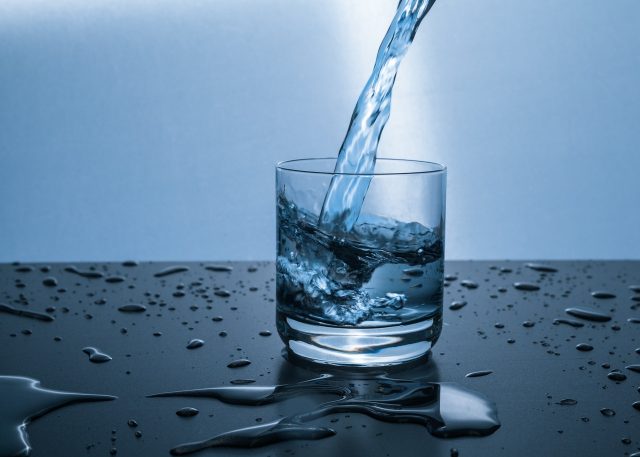
For your own safety, a really cool thing to do while high is stay hydrated! Drink plenty of water.
A great movie never disappoints – and the experience is even better when you're high. Grab some popcorn, turn off the light, and play a movie that you like. Thanks to platforms like Netflix, you have limitless options for the films. Here are some movie recommendations to get you started.

Plenty of trippy movies out there to enhance your experience. They're better with friends too!
One of the greatest downsides of abusing substances is strained relationships. If you are like many people who abuse drugs, you might have pushed some of your friends and loved ones away. In that case, this might be a great time to come up with a plan to win them back. Make a list of the people you've hurt with your drinking and note down how you're going to fix the relations.
Music has some of the most incredible therapeutic benefits. Certain tunes trigger the production of dopamine and serotonin in the brain. These neurotransmitters enhance the feelings of well-being and happiness. Listening to music is definitely one of the things you should do while high. Not just because of your mental well-being and physical health alone. Research shows that enjoyment goes way beyond the present moment because it influences the outcome of your hormones and cognitive functioning. Listening to music sober is a lot of fun, but it's even better when you're high. The parts of the brain that draw relations between ideas are stimulated when you're high.
Here are some cool songs to listen to when you are high:
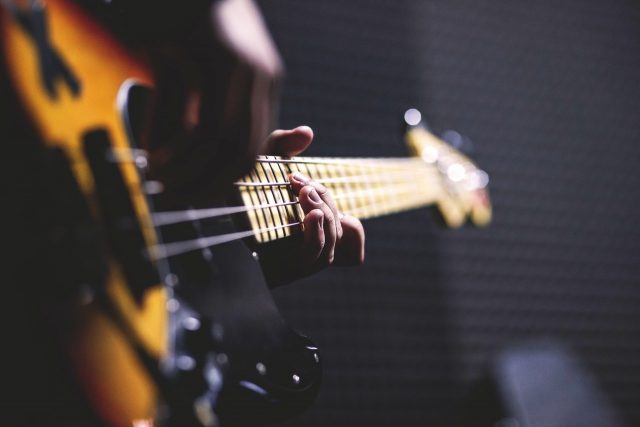
Music can be an amazing outlet for expression and it can offer a great deal of hope.
Video games promote a healthy lifestyle, increases social activity, and make you a better decision-maker. Studies show that gaming can help people suffering from cravings or addiction to reduce the intensity of their desires. But that's not all. A nice game can help you form stronger relationships with your friends and family members because of their matching love of games. If you are homebound, you can pair couch lock and couch co-op for a fantastic time. You can also play board games if that's what is available or what you prefer.
Reading a book sober is always better – but it doesn't mean you can't do it when you're high. Since your attention span tends to diminish when high, it might be good to go for short reads. You may also want to find an exciting fiction book. Here are some books to read while high:
If you are in a club and are feeling extra energetic or adventurers, you can hop on to the dance floor and whip out a couple of dance moves. Dancing is a fun and refreshing activity and is also a great exercise. Going to a local dance club allows you to get some social interaction, do some incredible exercise, and create new experiences. If you are at home, you can learn or practice dance steps to stimulate your mind.

Dancing can be great exercise. Physical activity can greatly stimulate your mind, body and soul.
It is always a good idea to keep clean. The easiest way to do so is to take a quick shower and put on some clean clothes. A long bubble bath can also work the magic. In this case, you want to turn out the lights and light some candles. You can also play your best music or listen to an educative podcast, to learn a few things.
Activities like Pilates, yoga, meditation are great for flexibility and core strength. They are also good for your brain. Many people get high before a long and relaxing meditation session – you can do this too. Find some chill place, roll your yoga mat, light some candles, and find your inner Zen. You can even meditate about a sober and fulfilling life.
Driving under the influence (DUI) of alcohol is a criminal offense. It happens when someone drives or operates a motor vehicle while impaired by alcohol to the extent that makes operating the vehicle unsafe. DUI may attract hefty fines, jail time, and high insurance premiums. It may also cause loss of health or life in case of an accident.
Most states in the US have laws requiring persons with DUI convictions to go through a test to determine the extent of their alcohol use. This evaluation checks the extent the driver’s life is affected by alcohol use, and if their drinking behavior is considered alcohol dependence or alcohol abuse. Meaning, if someone is arrested for DUI, that fact by itself shows that the individual has a drinking problem.
But unfortunately, most people may deny a drinking problem until something serious – like a DUI – happens. Others may acknowledge a drinking problem but do nothing about it. If your loved one falls in any of these categories, you’re likely wondering how you’d confront them after a DUI. In this article, we will discuss the intervention details and typical things charged during the DUI offense to give you an idea of how you should approach the situation.
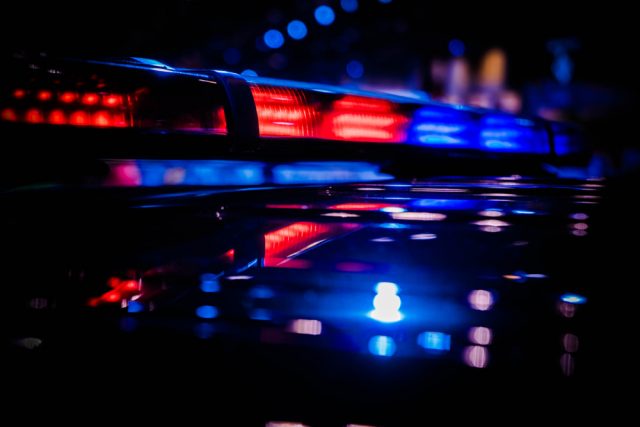
A DUI can be a life-altering experience for many reasons. None of which are typically good. If a loved one has recently been charged with driving under the influence, it might be a good time to get help.
When your loved one drives under the influence of alcohol or drugs, he or she may risk injury or death to self, pedestrians, and/or other road users. He or she may face severe consequences like jail time, high insurance rates, job loss, and large fees and fines. Their driving privileges may also be revoked. And when they’re found guilty with DUI, the information will reflect on their criminal records, severely limiting future opportunities.
If you think your loved one has an addiction problem, you should confront and nudge them to seek help. This could be anything from joining a support group, to attending rehab and so on. In some cases, getting help may allow your loved to mitigate some of the legal consequences that come with DUI charges.
It is incredibly difficult when you love someone with substance abuse disorder. Individuals who struggle with alcohol and drug addiction tend to be unable to love or appreciate the people around them as they once did. They also do a great job of pushing you on edge or making you feel scared. But as most recovered addicts will tell you, the confrontation from a friend or family often marks the turning point in their addiction story. It is what saves them from a life of self-destruction.
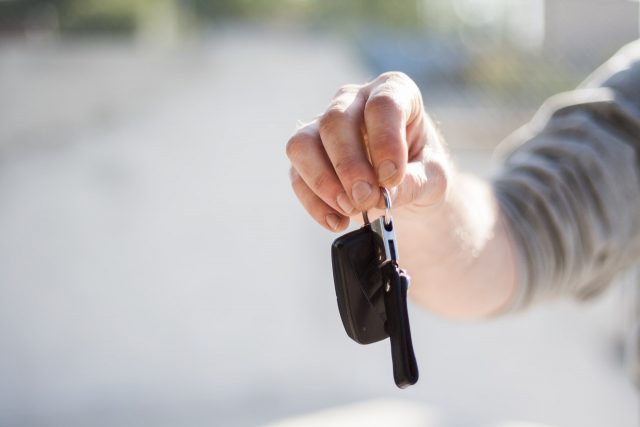
Typically, a DUI charge is a wake-up call to someone who is struggling with an addiction to alcohol or drugs. Be someone who can offer help.
In case you’re wondering how to go about the initial confrontation, here are some quick tips to get you started:
This is where you convene a group of people to confront your loved one. These people work to persuade the person to change their behavior. More specifically, they motivate them to seek help from a treatment program or a professional to deal with their alcohol addiction. The intervention team often includes family and friends of the alcohol-dependent person.
Fear paralyzes people from taking action. It is fear that makes families and friends ignore the problem or convince themselves that the addiction problem will fix itself. But this conversation needs to happen. Your loved one has a DUI charge. If you don’t do anything, it is likely there will be a next time.
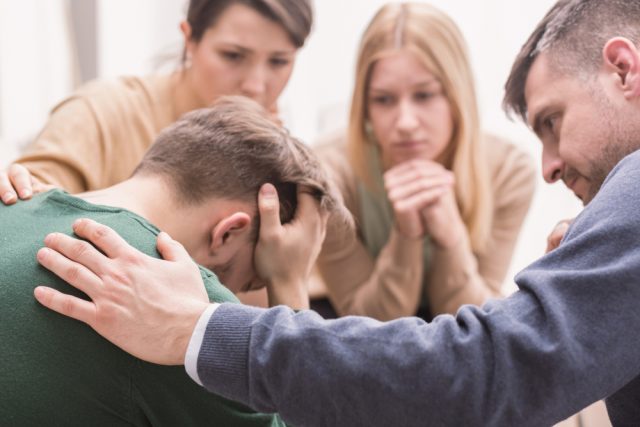
Staging an intervention with an alcoholic is an important step on the road to recovery from addiction. Be supportive and caring throughout the whole process. Addiction takes time to heal.
It’s essential to prepare and decide what happens in an addiction intervention before you involve the person. People struggling with alcohol addiction are in a fragile state, mentally and emotionally. So, you have to intervene in a way that doesn’t make them feel attacked or alienated. Everyone should be friendly, composed, and open-minded. Here are some good points to keep in mind:
The person may likely want to walk out of the room. However, the team should ask him/her to sit and listen to what everyone has to say. Modern approaches to confrontational interventions rarely involve accusation, humiliation, and pointing out the subject’s flaws.
Each person in the team can share thoughts or read their letter expressing their concerns. In this case, these grievances should consist of how the subject’s behavior has affected the person speaking. For example, the DUI has caused property damage or emotional torture, and so on. The focus should be to encourage the subject toward treatment.
Your intention shouldn’t be to accuse the subject or force them to take treatment. But you should lay out specific outcomes should the person fail to get treatment for their alcohol addiction.
Once each member expresses their love and concern, the group should offer the person with a list of possible treatment options to consider. And when it’s all said and done, the subject decides whether or not to seek treatment.
The best way to learn how to face the person with an addiction problem is to stage an intervention with the help of a professional interventionist. This allows families and friends to come together and plan how to confront the subject.
You may want to confront the person immediately after the DUI. But that’s never the best idea. You want to wait until they are sober – preferably in the morning. At this time, they will be rational and less likely to lose control of their emotions. Besides, waiting will give you more time to stage an intervention rather than doing it all by yourself.

Intervening in a loved one's self-destructive lifestyle can help that person turn their life around.
Chances are your loved one doesn’t want to talk about the DUI and their addiction problems. When you insist on having a conversation, they’ll likely be resistant and angry. You should know that he or she isn’t resisting you, but the conversation and its possible outcomes. Speak with compassion and care, not with judgment. When you accuse or speak with a negative tone, you’ll only stir resentment and anger.
Your role in getting help for the individual you are confronting is critical. Even though your words support, or actions may not go through immediately, they will bring the patient a step close to accepting they have a problem, enrolling in an addiction treatment center, and regaining control of their life.
Confidence is an integral part of recovery. It not only influences your choices and decisions but also leaves you empowered. There are ways to boost your confidence while in recovery and they are crucial to your success.
But if you're like most people, you likely had self-confidence issues before you developed an addiction. Unhealthy decisions, guilt, shame, anxiety, and fear can wreak havoc on your self-esteem.
Luckily, there are a few things you can do to boost your confidence levels. For instance, you can get a nice haircut, get new clothes, take a new hobby, exercise, and so on. You can also try to honor your emotions, know your strengths, eat healthily, and be open to helping others.
Let's look at how addiction and low self-confidence relate and ways to boost your confidence after getting clean.
When you lack confidence, it becomes easy to get influenced by the world around you. For example, you may have a hard time overcoming negative thoughts. So you turn to outside activities or experiences to change those negative thoughts into positive ones.

It is crucial to believe in yourself during recovery from addiction. There are some simple ways to help you increase your self-confidence and help prevent a relapse.
Some people turn to drugs or alcohol to try to get rid of the negative state of mind or situation. According to one study, low confidence levels can lead to a lack of development and a tendency toward the consumption of alcohol and drugs.
In many cases, there isn’t necessarily a direct connection between addiction and low self-confidence. Other factors like behavioral or mental disorders and family history also play a role in drug abuse.
But addiction affects confidence because it is an unusually dehumanizing condition by itself. A person with low-confidence levels acts and think in ways linked to not feeling as though they’re a good and worthy individual.
You may not know this, but something as simple as getting a new hairstyle can boost your confidence levels. An excellent style will put you in a fantastic mood.
How you may ask.
Haircuts make you look and feel better about yourself. You get compliments and enjoy catching your reflection in the mirror. Loving what you see in the mirror is critical in recovery.
Besides, going to the salon means getting pampered. A massage or wash go along way - but having your hair stroked along is enough to release the feel-good hormones.
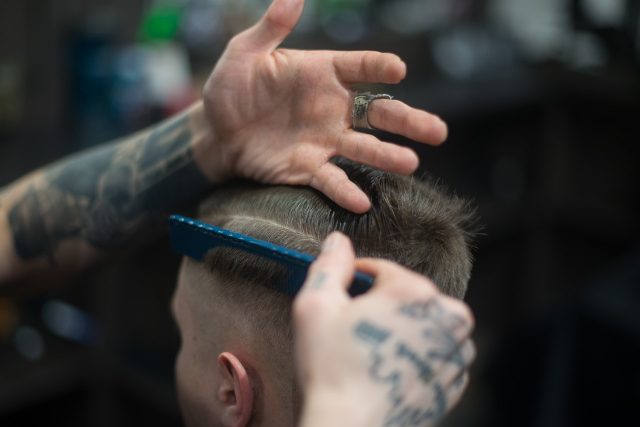
Sometimes looking good can help you feel good too. Take pride in even the smallest accomplishments. This will help you celebrate even the smallest of victories all the time.
Self-care is usually the last thing on the minds of those with substance abuse disorders. Their top priority is to get drugs and alcohol.
Now that you are clean, you may take advantage of this time to get some nice looking clothes. Tag a friend or loved one along, and let them help you find something that looks good on you.
When you look and feel good about yourself, you'll be more willing to go out of your comfort zone. You'll also be open to meet new people and try new things.
Several studies have shown that dressing well boosts your performance and improves others' impression of you. It can also change the way you interact with others.
Negative self-talk can lower your confidence levels. So, you may want to replace any negative thoughts with positive ones. Being thankful for what you have is a good start to thinking positive.
Positive thoughts attract good things to you. And when good things come your way, you'll feel more confident. Your recovery is a huge step. Let nothing or no one tell you otherwise.
When you shift your perspective to a more positive one, your outlook on life will change. You'll love more, hate less, demand less, and so on. Over time, your new way of thinking will help you prevent relapse and build meaningful relationships.
Positive self-talk is one of the easiest things you can do to feel more confident. After all, it’s all about telling yourself good things - like "I'm beautiful," "I'm enough," "I'm worthy." Keep doing that every time, and you'll see the difference.

Healing your physical body with rigorous exercise also has an impact on your mental health. The more consistent, the better!
You may know this, but we'll repeat it. Exercise and healthy eating are great for your body. Most treatment programs teach different types of workouts that you can still do. But it's a good idea to explore your options to see if you'll love others more.
You can try out yoga, swimming, running, walking, tai chi, team sports, and group classes.
Exercise offers the following benefits:
Your physical and mental health are connected. The more you care for yourself, the better you'll feel about yourself. You’ll also gain more confidence.
You don't have to make significant life changes to rebuild your confidence. You've been through enough change anyway.
You can keep a gratitude journal, for instance. After all, there’s plenty to be happy for: a sober life, a bright future, supporting family, new hobbies and so on.
Cleaning your room and tidying up space can also work great. Although they may seem like a bummer, these activities can boost your mood. A clean space will make you feel much better than a dirty one. Psychologists say that the state of your surroundings can affect your mental state.
Other self-care practices that are worth trying out include:
Once you're clean, you may find it hard to feel good or happy all the time. This is because alcohol and drugs often fill a social void. Finding new hobbies can be a great way to fill your time, interests, and energy.
Addiction treatment is not enough to maintain mental health over the long term. You need hobbies -- especially social hobbies -- to get a healthy amount of serotonin and dopamine. This way, you won't have to think about the pleasures of substances.

Finding a productive hobby will help you boost your confidence while in recovery from addiction.
Hobbies are healthier alternatives to drugs and will help you feel included in society. Examples of good hobbies include public speaking, playing music, team sports, fitness, cooking, and gardening. These activities:
Alcoholics Anonymous and Narcotics Anonymous are great groups to be part of because they allow you to meet with others who’ve been in the same position as you. They also provide a platform where you can express yourself without fear of judgment. Being in the company of peers can help elevate your confidence and keep you motivated towards achieving your goals.
Family therapy can also be a great way to repair any strains or damage brought about by addiction. Although treatment facilities often provide such therapies, you may still want to explore options if there’s an underlying problem.
The accelerated spread of the novel coronavirus has brought the global economy to a standstill. Predictions of potential impacts of the pandemic’s shock on the worldwide economy vary considerably. Yet many agree that the economy is facing the most severe challenge of the post-war era due to the sudden halt in economic activity in both developing and advanced countries.
Five months into the pandemic and businesses of all shapes and sizes are either shaping up or shipping out. The lockdown regulations have seen more and more companies change the way they do business. However, there is an industry that’s taking a massive hit with the travel ban and border regulations – illegal drug trade.
The COVID-19 pandemic is dealing heavy blows on the illicit drug trade – or at least for now. The closure of all ports of entry and travel restrictions has made it difficult for drug cartels to ship their products across borders. That’s not the only problem. There’s also a significant disruption in the supply chains. As it turns out, drug traffickers depend on chemicals produced in China to make profitable drugs like fentanyl and methamphetamine. But with everything that’s happening, they have a hard time accessing these drug supplies.
The extensive disruption is causing shortages of illicit drugs in the US and UK, according to a United Nations report released on April 1. For instance, meth supply has decreased in most parts of the US, causing its price to skyrocket. Heroin and cocaine have seen the same uptick in price. These could be attributed to the shift in demand and supply equilibrium. The report further revealed that illicit drug trade is still thriving in other countries including, Australia and parts of Asia amid the pandemic.
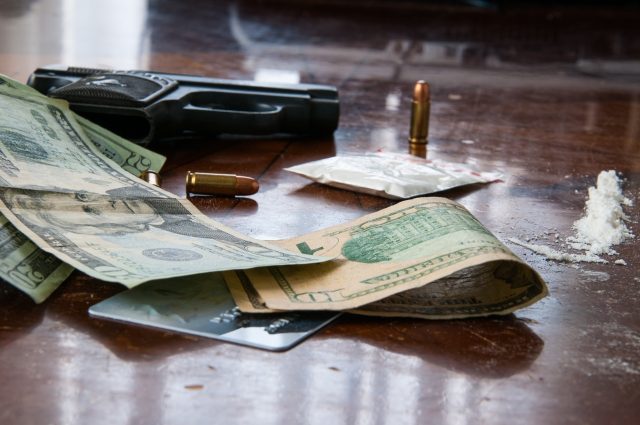
When drug shortages occur, price and associated criminal activity tend to increase as well.
As mentioned earlier, most drug traffickers get their synthetic drug supply (like crystal meth) from countries like China. But the air travel restrictions and flight cancellations are disrupting the normal operations.
The opiate seizures in the Indian Ocean show the impact that Coronavirus is having on the heroin business, considering these drugs are often trafficked by land.
Then there’s cocaine, which is mostly trafficked along maritime routes. The drugs have been detected in the European ports in the past few months.
Marijuana seems to be the only drug that hasn’t been widely affected by the virus since it’s grown and produced near places where it’s bought and sold. Still, smugglers aren’t very willing to ship marijuana across borders or regions under lockdown.
The supply and distribution of most illicit drugs (especially those that rely on ingredients sourced from China, Afghanistan, Colombia, etc.) are restricted as countries close their borders to control the deadly Coronavirus. Several reports show a reduction in supplies of synthetic marijuana, cocaine, and heroin.
A post on Forbes speculates that the Covid-19 lockdown is putting darknet drug cartels out of business. It further states that the lockdown is hitting pubs, clubs, bars, and other drug-taking hotspots, but darknet dealers accept bitcoin as payment too. Bitcoin, which allows users to purchase illicit drugs, stolen goods, and even guns, has seen a significant drop in spending since the onset of the virus.
Again, with the transit routes through South America having shut down, drug trafficking cartels are unable to cross the Southwest border. There has also been a dramatic reduction in the foot and car traffic to and from Mexico, a major source of America’s heroin. Not to mention the stay-at-home orders and increased law enforcement (police presence) that discourages both buyers and dealers from meeting in public.
The report from the UNODC highlights the potential effects the pandemic may have on drug production in countries like Afghanistan, which cultivates about 90% of the global illicit opium. With March to June being the critical months for the opium harvest in the country, this year’s yields could go to waste if laborers won’t be willing (or able) to travel to where the poppies are grown.
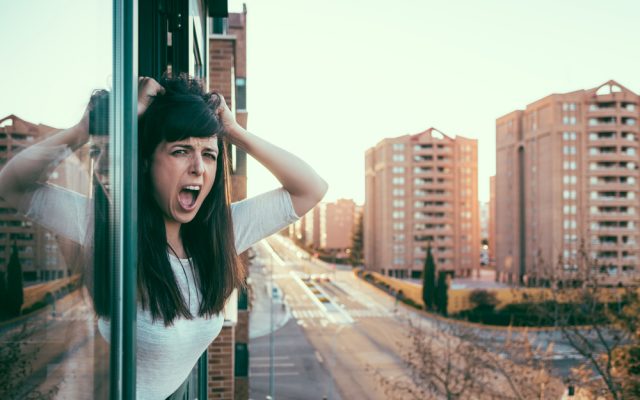
People aren't just stocking up on toilet paper and hand sanitizer. Many are panic-buying illegal drugs, due to the fear of looming global shortages.
Those who manage to access illicit drugs like cocaine are panic-buying so that they don’t run out of stock should the supply run out. An anonymous drug dealer told The Guardian that they do not expect any more cocaine shipments from abroad for six weeks. He said, “I sell cocaine and cannabis to suppliers in the north of England. I have 20 guys on the street servicing about 200 regular clients. But right now, we have two major concerns: sourcing drugs and making enough cash. With the looming shortage, my customers are buying ridiculous amounts of cannabis.”
Of course, as you would expect, people won’t behave rationally, whether it’s about buying sanitizers or marijuana. What we have seen happen with essential goods is a depiction of what’s happening in the drug world. Whenever possible, some users stock up on their drug of choice, leading to supply issues. Stockpiling might cause users to consume more drugs than usual. And when they exhaust their stock, and cannot get more, they could end up with withdrawal syndrome.
Inevitably, they’ll try alternative drug which exposes them to harm because they may not be used to the drug or know the safe doses. The same applies to the group that cannot stock up because of different reasons – like lack of money. They also will turn to substitutes, like diazepam, fentanyl, benzodiazepines, and so on. This shortage is increasing the number of IV (injection) users who are sharing needles to share what’s available. This exposes them to the risk of contracting hepatitis, HIV/AIDS, and Coronavirus itself.

When the government fights the illegal drug trade, organized crime and the drug cartels fight back harder.
The UN warns that the Covid-19 pandemic may present new opportunities to some cartels. Indications reveal that drug smugglers are adapting their strategies, with some having started to take advantage of the situation to boost their image among the population by offering solutions to the vulnerable. This prompted the Trump administration to launch a war on drugs to combat drug trafficking amid Coronavirus pandemic. In the briefing, the president said the country must not let the drug kingpins and smugglers exploit the Corona outbreak to threaten American lives. He added that the US Southern Command would increase surveillance and seizures and disruption of the drug shipment.
We all know that drug and substance abuse can cause major health complications to the body’s vital organs, particularly the kidneys, liver, stomach, and bladder. But what most of us don’t know is that prolonged use can also hurt the body’s largest organ – the skin.
Substance abuse is associated with different short- and long-term effects. These effects vary depending on various aspects, like the type of substance, amount, and duration of intake and route of administration. The body size, general health, and concurrent use with other substances also play a part. In this article, we will focus more on show drug use affects the skin.
Drug and alcohol use can change a person’s look as fast as it does their behavior. While some drugs take relatively longer to rear their ugly effects on the skin, others do so within the shortest time. But either way, one thing is for sure, those with substance disorders “wear” addiction just as much as addiction wears them down.
If you are wondering about the correlation between drug misuse and skin problems, you should know that substance use and nutritional deficiencies go hand in hand. Drug-seeking behavior overrides healthy dietary considerations, disrupting the intake of the recommended daily nutrients. But that’s not all that there is to this problem.
There’s the issue of the liver working twice as hard as it needs to, to digest the ingested substance. This, in turn, affects its ability to process food optimally. Alcohol, too, plays a hand in limiting the breakdown and absorption of nutrients. The suppression of the immune system is another risk factor for skin infections and worsening conditions like psoriasis.
The disruption of adequate nutrient intake and the poor uptake due to digestion and absorption issues may result in vitamin deficiencies that may cause skin disorders. Just as an example, fat-soluble vitamin A is essential for good skin health. It not only prevents inflammation but also creates and repairs skin cells. Lack of vitamin A may lead to dry skin, poor wound healing, acne, and breakouts. Vitamins B1, B3, and B6 along with zinc are also essential for healthy skin – all of which may be insufficient or lacking in someone abusing drugs or alcohol.
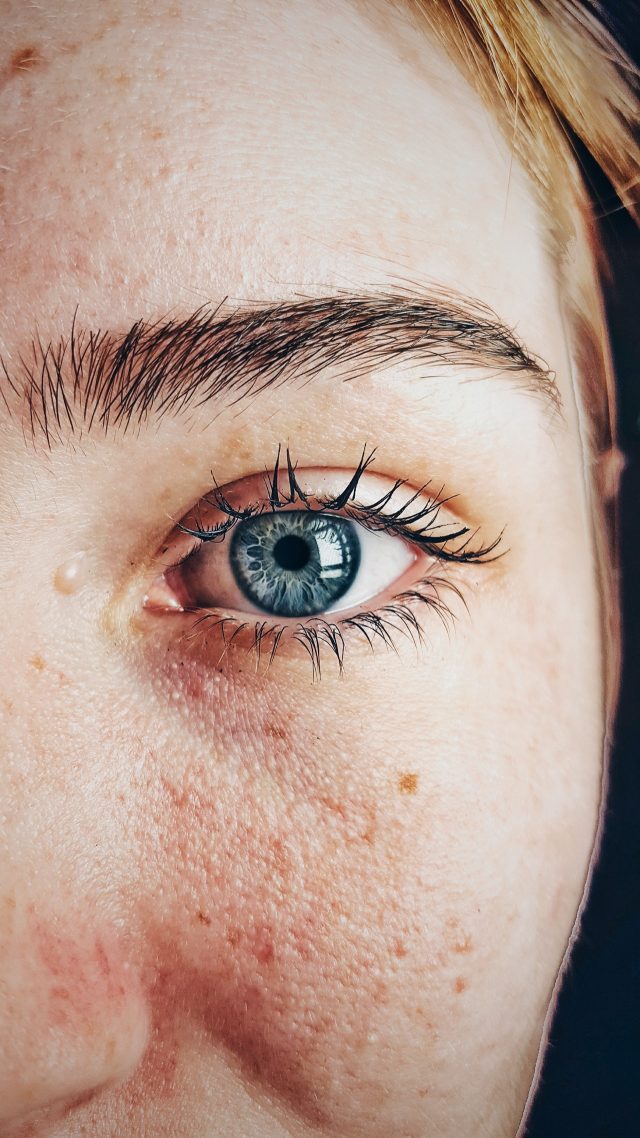
Substance abuse can take a major toll on your physical health. Key nutrient deficiencies can play a role in developing bad skin conditions.
Other reasons why people who struggle with addiction develop skin problems include:
But as we mentioned earlier, these drugs have different effects on the skin. So, the skin effects from meth use may vary from that of alcohol and so on. To give you a clear picture of how these substances affect the skin differently, let’s look at the drugs in detail.
Methamphetamine, or crystal meth, as it’s commonly known, has the most notorious effects on the skin. In fact, even its short-term use can hurt the skin. That’s why you can identify meth users right away; they will have meth sores, scars, and scabs on their faces. And the effects of meth seem to linger, long after someone has quit using. Most of the people who use meth will also have meth mouth, which is characterized by extensive gum disease and tooth decay that causes teeth to crumble, blacken or fall out.
Alcohol misuse is linked to a wide range of health problems, especially skin changes. Since its lipid- and water-soluble, it penetrates through all the body tissues and affects the most vital functions. The most common skin manifestations of alcohol abuse include pruritus, jaundice, urticarial reactions, wrinkling, dry skin, and red skin. Alcohol also causes flare-ups of skin conditions like psoriasis and rosacea.

The frequent consumption of alcoholic beverages can cause skin deterioration.
Drug misuse, particularly those that involve intravenous or other injectable administration, usually leaves behind linear scars or track marks along the injected veins. Over time, this vein becomes abnormally dark (hyperpigmented). If the drug is administered right below the skin surface, one may have deep, round scars in the area. Skin and soft tissue bacterial infections (due to extravasation, skin popping, necrosis, and increased numbers of bacteria on the skin) are common in injectable drugs.
Most of these drugs -morphine, amphetamines, cocaine, and heroin - are administered intravenously in different parts of the body like the elbow pit, neck, or arms. When someone abuses these drugs for a long time, the previous injection sites may close up, forcing them to start injecting themselves through the groin, toes, fingers, or foot. In this case, the patients will have needle tracks at these sites. Other common skin conditions from illicit drug use include impetigo, cellulitis, and abscess formation.
Some users prefer to snort coke (insufflation). This group is prone to infections and inflammation of the nose’s external structure. Sniffing cocaine can affect the nose in different ways, causing damage to the cilia. Crusted skin in the nasal passage and sores in the mucous membrane of the nose are also common effects.
Skin reactions are common side effects of prescription drugs, especially those containing stimulants. The effects can only worsen if these drugs are abused. And while people react differently to these drugs, most of them often present with skin disorders like hives, rashes, and hypersensitivity.
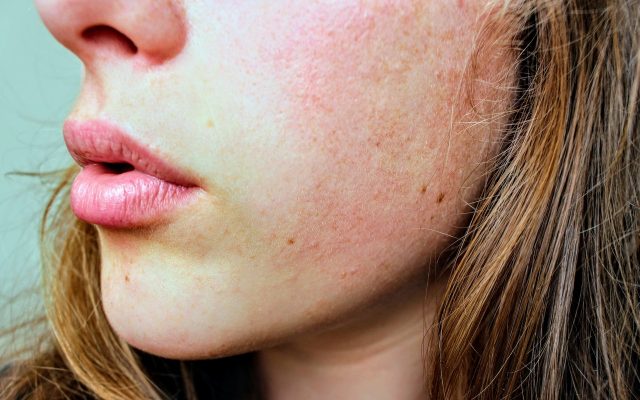
Drug use does not mean a person is bad. Substance abuse can arise from a variety of challenges that people face in their lifetimes.
The cases of substance abuse and addiction are ever-rising. According to one wound educator, there are more overdoses and skin and wound issues than never before. He believes that there needs to be less judgment and more education because not everyone who misuses drugs does so because of a poor choice. Some abuse can result from self-medication, unmanaged mental health issue, or family genetics.
Patients are advised to get medical assistance to help address their skin problems. They can also embrace lifestyle changes to avoid making the situation worse. However, since addiction is a mental disease, these individuals should go through addiction treatment. Luckily, several programs are designed to help those struggling with drug addiction and may help them attain sobriety and ditch the bad habits.
Many people saw a meme going around in late January - early February that looked like a reputable news story, with the headline: “Cocaine Kills Coronavirus, scientist is shocked that the drug can fight the virus”. This had many people seeing (and believing) that just maybe, the illegal, illicit drug could help prevent people from getting COVID-19. Of course, to answer the question can cocaine help kill the coronavirus, or COVID-19 is a resounding NO. Absolutely this news “story” was false.
Cocaine cannot kill the coronavirus, nor assist in the treatment of any disease. In fact, the use of cocaine in any form would probably only make any symptoms of COVID19 much, much worse. Coronaviruses are a respiratory infection that weakens your breathing and causes a nasty cough in the most severe cases. Snorting coke as a powder, or smoking crack cocaine both damage your respiratory tract, which could weaken your immune system response. Using cocaine would hinder your ability to fight-off diseases by harming your body’s natural response system.
Oddly enough, in researching this story, I found out the meme originated from a tweet by Anton Newcombe, the front man for the 1990’s psychedelic-revival, American rock band: The Brian Jonestown Massacre.
Breaking News: #coronavirus ? pic.twitter.com/AWiDvw9lP8
— anton newcombe (@antonnewcombe) January 30, 2020
This is a band that I am a huge fan of. I actually still listen to BJM (a lot) and that I have followed for years, so it was kind of a funny discovery for me. Even Newcombe himself was shocked at how far the tweet had spread. The French government’s official Health Ministry had to issue a tweet saying: “No, cocaine does not protect against COVID-19.”
#Coronavirus #COVID19 | Pour se protéger et protéger les autres :
Se laver régulièrement les mains
Tousser dans son coude
Utiliser un mouchoir à usage unique
Ne pas se serrer la main? Téléchargez les supports de communication https://t.co/J0rF5r9N5t
? https://t.co/lMMn8i6Fl1 pic.twitter.com/hbnDSYVEIg— Ministère des Solidarités et de la Santé (@MinSoliSante) March 10, 2020
Furthermore, major mainstream media publications, like CBS News and Business Insider have covered the controversial ‘cocaine kills the coronavirus’ tweet. The latter compelled the BJM front man to reply on his own tweet: “a minimum of common sense is needed when you are online” adding, “this tweet was a joke.” Unfortunately for logic, the joke went over the heads of quite a few people. I’m guessing a lot of wishful thinking went into the (no pun intended) viral spread of this tweet as misinformation.
Another post of internet disinformation by none other than QAnon. It claimed that drinking a “Miracle Mineral Solution” or “MMS” would kill the coronavirus. This “MMS” is a type of bleach, and is deadly. Obviously, drinking bleach will kill you before it ever killed any viruses in your body, so please, have some common sense and don’t drink bleach either!

Top-notch memes are being created in this time of morbid uncertainty.
This quarantine has hit all of us pretty hard. All across the world, people are washing their hands and practicing social distancing, but what does that mean for people in active addiction recovery that are reliant upon a social network of peer support groups? For people who use drugs or are in a treatment program for addiction and a substance use disorder, the threat of the coronavirus might seem remote when compared to the very real threat of a drug overdose, painful withdrawal symptoms, or a life-threatening relapse.
The Centers for Disease Control (CDC) recently recommended that people stock up on their medications along with food and other necessities as the quarantine began to close stores and force people to stay home. With strict federal control of medication-assisted treatment (MAT) prescriptions like buprenorphine for opioid use disorder, it is impossible for a recovering addict to obtain a larger supply of these life-saving medications.
Many who are struggling with addiction are currently being faced with yet another onerous hurdle to their continued sobriety. Continuity of care is essential in addiction treatment programs. The disruption of quarantine guidelines sent down from federal, state and local governments can cause people to miss doctor appointments and other types of treatment services, like counseling and group therapy sessions.

It's hard to have peer support group meetings in the quarantine from the COVID-19 pandemic.
Absolutely vital 12-step program meetings, like AA and NA are virtually nonexistent. Yet many are trying to adapt to the current state of everything as best as they can. Some peer support groups and drug rehab centers have begun hosting meetings and outpatient group therapy videos online. Through streaming services like Facetime, Skype Google Hangouts or Zoom, they hope to offer continuity of care while we all attempt to socially-distance ourselves from one another.
Many drug rehabilitation facilities are making rapid changes to their services due to the coronavirus pandemic. In my opinion, these changes are urgent given the existential weight of this global threat. Typically stressful situations, (say, a pandemic for instance) can trigger recovering addicts, tempting them to relapse into their old, familiar patterns of substance abuse.
These stressors are especially difficult not only for people who are recovering, but also for people currently in active addiction.
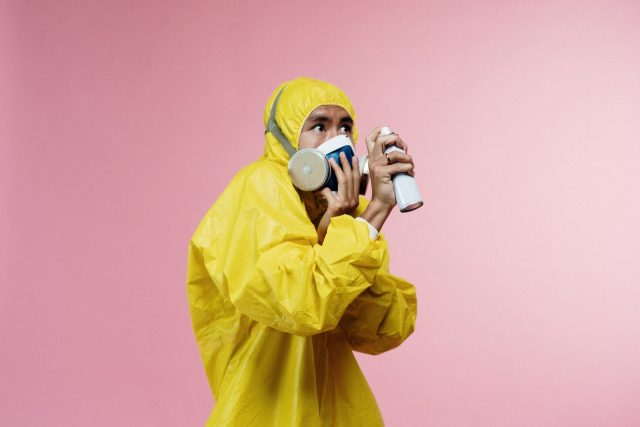
2020 has been an eventful year...
It is hard for many of us to see the light at the end of the tunnel. Not only do we have to deal with a potentially-deadly, highly-contagious virus spreading, but we will also have to deal with a substantial economic crisis once this quarantine is over. With all the stress, worry and uncertainty of 2020, many in the drug rehab industry are worried that more people will relapse as a result of this crisis.
The good news is that drug rehabilitation facilities are still open all across the United States. They, like other medical services, are considered “essential businesses” and while they are allowed to remain open at this time, many are turning to video services both for group therapy sessions and one-on-one counseling, in an attempt to limit physical, social contact. Sarah Dowling, the program director for 10 Acre Ranch, an addiction treatment facility in Riverside, California had this to say about the pandemic:
"During this desperate time of crisis there is still hope and community. Online meetings are in full effect and people are learning how to stay connected without the ability to leave their homes. It is refreshing to see people making extra efforts to reach out to those who are seeking help. I would hope anyone in need would find the courage to call us or log into an online meeting for support." - Sarah Dowling MSW, CADC-III, CATC IV
Program Director
(877)-228-4679
While addiction is said to last a lifetime, that doesn't necessarily mean that the harmful effects on your brain will. Addiction is a complex condition that is considered by the majority of healthcare professionals to be a disease of the brain. It is often characterized by compulsive, almost uncontrollable, drug seeking and drug-using behavior despite negative consequences. People who suffer from drug addiction (or severe substance use disorder) have an intense focus on getting and using a certain substance, like drugs or alcohol, to the point that it takes over their lives. Furthermore, they keep using drugs or alcohol even when they know it will cause further problems in their lives, family, and even health.
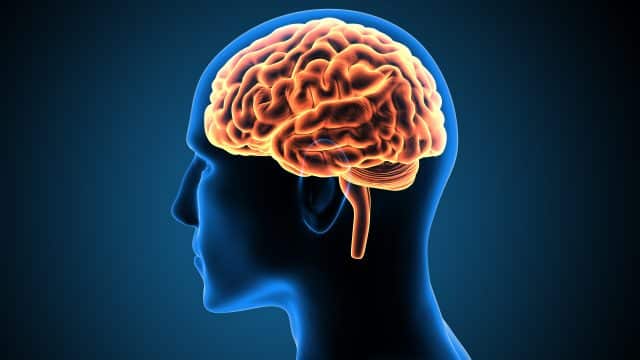
The brain has a unique way of developing cravings and reward systems with drugs and alcohol.
Addiction impacts the brain on many levels when someone develops an addiction, the brain craves the substance as a reward. The brain responds to addiction in several different ways depending on a number of factors, such as; the type of drugs used, the number of different drugs being used at the same time, the frequency or number of times drugs or alcohol are used within a specific period of time, and what stage of addiction the addict is in.
The brain is responsible for a majority of functions within the body. The brain regulates temperature, the emotions we feel, the decisions we make, simple things like breathing and coordination, and much much more. This major organ in our body also impacts physical sensations that we feel, it is responsible for the cravings we get, for our compulsions and our habits. When someone is under the influence of powerful and harmful chemicals, like heroin or methamphetamines, they can alter the function of their brain.
Most drugs interact with the reward center or pleasure center of the brain, releasing strong feel-good emotions that affect the individual's body and mind. Our brains reward us when we do something that brings us pleasure, normally to encourage healthy habits that are meant for survival, like eating a good meal or working out. People who take drugs or alcohol continue doing so to support the intensely good feelings our brain releases, creating a cycle of drug use and intense highs. Eventually, they have to take drugs just to feel normal.
Our brains are essentially wired to increase the odds that we will repeat pleasurable activities. The neurotransmitter dopamine is central to this, and when drugs or alcohol are released into the brain, we get a big surge in our dopamine receptors. The same goes for when our reward center is activated by a healthy pleasurable experience, just a much smaller amount. This burst of dopamine trains our brain to think that something important is happening and that it needs to be remembered.
This dopamine signal causes changes in neural connectivity that make it easier to repeat this activity, or using drugs and alcohol, again and again, and again, without thinking about it, leading to the formation of our habits. Since drugs produce intense euphoria and a surge of dopamine, our brains powerfully reinforce the connection between the consumption of the drug and resulting pleasure and all of the external cues (or triggers) that link the experience. This teaches our brains to seek drugs at all other expenses, it tricks your brain into believing that we need it to survive.
We know by now that drugs cause damage to the brain and brain function. While drugs have an impact on a number of areas in the brain, there are 3 main areas most heavily affected by drug or alcohol abuse.

Abstaining from the use of drugs or alcohol is the only way to help get your brain function back to normal.
According to the National Institute of Health, one year of abstinence partially reversed the structural changes in the brain of an alcoholic. The most brain improvement will happen within the first year of complete abstinence, where some improvement can take 5 to 7 years. After around 14 months of sobriety, though, the dopamine receptors in the brain return to normal. So yes, the brain can heal and this is an exciting new area of study for doctors who have started using brain scan images to help addicts in their sobriety. While some damage may be permanent, quitting drugs and alcohol ensures no further damage is caused. The only way to guarantee that you are no longer causing harm to your body or your brain is to get help by reaching out to a 12 step support group or by attending an addiction treatment facility.
According to the National Institute on Drug Abuse
“Addiction is a chronic disease characterized by drug seeking and use that is compulsive, or difficult to control, despite harmful consequences. The initial decision to take drugs is voluntary for most people, but repeated drug use can lead to brain changes that challenge an addicted persons self-control and interfere with their ability to resist intense urges to take drugs.”
Even with the stigma surrounding addiction, nearly 21 million Americans suffer from a drug or alcohol addiction today. While the population in the United States is around 327 million people, around 6 percent of people living in our country have a substance use disorder of some kind. Let’s break that number down a little bit further.
Alcohol is perhaps the most widely abused substance in the United States as it is a socially acceptable drug in a variety of social circles and social gatherings. It is also widely available to most members of the population, it is sold in gas stations, grocery markets, liquor stores, concerts, etc across the country. According to the Centers for Disease Control and Prevention (CDC), more than 88,000 people die each year from alcohol-related deaths, making it the third leading preventable cause of death in the United States, behind tobacco and poor-diet. It is estimated that around 15 million people over the age of 18 struggle with an alcohol use disorder, while less than eight percent of those actually received treatment. Furthermore, according to the National Survey on Drug Use and Health, 401,000 adolescents aged 12 and older had also struggled with an alcohol addiction in the year 2018.
Methamphetamine, also known as meth, crystal meth, or ice, is another popular illicit drug that is abused in the United States. First synthesized in 1887, meth is usually an off white powder that can be smoked, snorted, or injected. Crystal meth is a very dangerous and highly addictive drug. According to the National Survey on Drug Use and Health, nearly 1.6 million people reported having an addiction to methamphetamines in the year 2018. Additionally, nearly 964,000 youth aged 12 and older reported having a problem with methamphetamine use in that same year. However, the average age of new methamphetamine users is roughly around 23 years old. The Centers for Disease Control and Prevention reports that meth has the highest rate of overdose in over 19 states, where about 15 percent of all drug overdose deaths were related to methamphetamine in the year of 2017.
Heroin is a highly dangerous opioid drug made from morphine and has increasingly risen in popularity among people on the streets. Heroin is usually seen as a white or brown powder, or a black sticky substance known as black tar heroin. Heroin can be injected, snorted, and inhaled. It was estimated that around 948,000 Americans reported having a substance abuse problem with heroin in 2016, a number that has unfortunately been on the rise since 2007. However, in the younger age category of people aged 12 and older, heroin use has been on a decline, coming in at less than one percent per grade level, thankfully. Although, according to the CDC, during the year of 2017 over 15,000 people died from drug overdoses involving heroin in the United States alone, a rate of almost 5 deaths for every 100,000 Americans. Heroin overdoses have also increased five-fold between the years of 2010 and 2017.
Cocaine is a very powerful, addictive, and stimulating drug. Powdered cocaine is normally a fine white powder, but it can be chemically altered into crystalline rocks that can appear in varying colors depending on the chemicals used in the manufacturing process, ranging from yellow to rose to off white. Cocaine or crack cocaine can be snorted, ingested, smoked, or injected. Take from the National Survey on Drug Use and Health, nearly 5 million Americans are regular cocaine users, while an estimated 2.2 million people reported having a substance abuse problem with cocaine or crack cocaine in 2017. In 2017, over one million Americans aged 12 and older had tried cocaine for the first time. In that same year, from data collected by the CDC, cocaine was involved in one out of every five overdose deaths, rising 34 percent from the previous year of 2016.
Another epidemic on the rise in the United States is the misuse of prescription drugs, mainly opioids. Research suggests that teens are at a higher risk of prescription drug dependence because of the misleading idea that prescription drugs are somehow less dangerous than other illicit drugs. However, anyone can be at risk of becoming addicted to prescription drugs. The most commonly abused prescription drugs are opioids, stimulants, tranquilizers, and sedatives. In 2017 alone, more than 2 million people abused opioids for the first time. Sadly, around 130 Americans die every day from opioid-related overdoses, with 47,600 fatal overdoses related to opioid use in 2017. Furthermore, around 10 percent of people who abuse opioids will become addicted to heroin. More people report using prescription drugs rather than cocaine, heroin, and methamphetamine combined, making this the second leading abused substance behind marijuana. Luckily, medication-assisted treatment is available to help people who suffer from an opioid use disorder.
All in all, addiction is a problem that is a constant growing concern in the United States, even with all of the information out there. This is partially due to the stigma surrounding addiction, as less than 10 percent of people who suffer seek professional treatment or get help for their substance abuse problem. It is never a bad thing to admit when you have a problem or when you need to get help, and you do not have to go through this alone. If you or a loved one are suffering from an addiction, seek out a professional rehabilitation center near you or try attending a 12 step program such as Alcoholics Anonymous or Narcotics Anonymous.